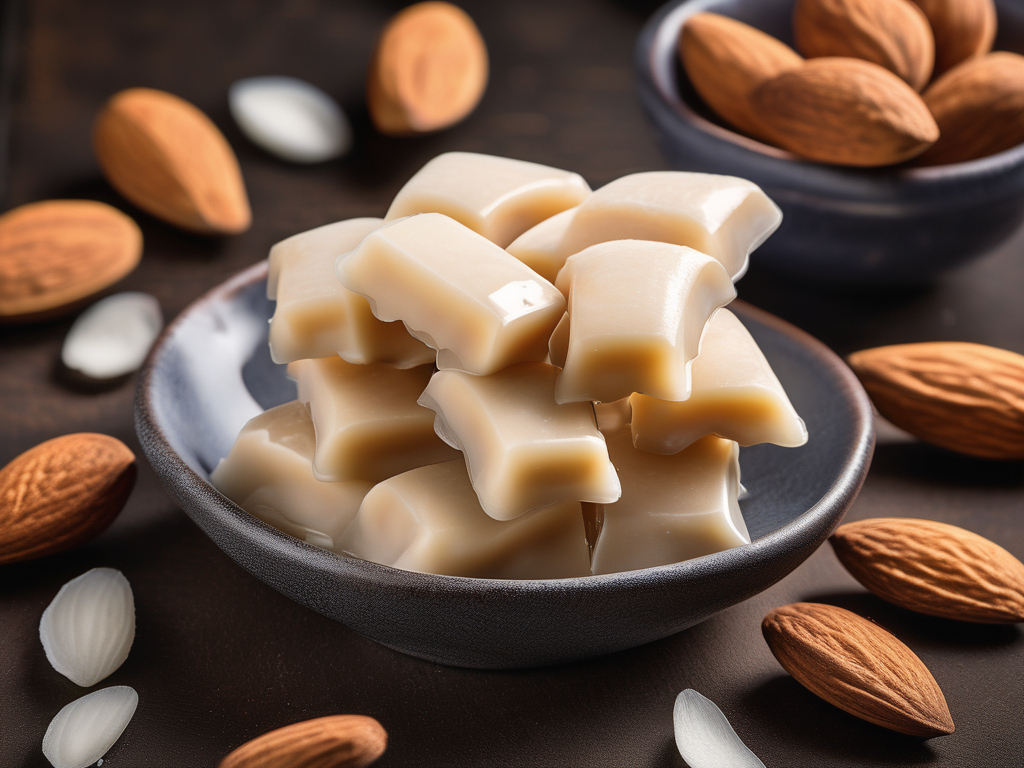
How to Store Almond Paste to Prevent Spoiling
Get Your Free Food Safety Cheat Sheet
30 most common foods with instant answers. Print it and stick it on your fridge—completely free!
How to Store Almond Paste to Prevent Spoiling
Almond paste is a versatile and delicious ingredient used in a variety of baked goods and confections. However, to ensure its longevity and prevent spoiling, proper storage is crucial. In this blog post, we will discuss the best practices for storing almond paste to maintain its freshness and quality. (Almond paste)
Why Proper Storage is Important for Almond Paste
Almond paste is made from almonds, sugar, and sometimes a few other ingredients. Due to its high sugar content, almond paste can spoil if not stored correctly. Improper storage can lead to mold growth, off-flavors, and texture changes, rendering the almond paste unusable. To preserve the quality and safety of almond paste, it is essential to follow proper storage guidelines.
Best Practices for Storing Almond Paste
1. Store in an Airtight Container
- Transfer the almond paste to an airtight container to protect it from moisture and air exposure.
- Ensure that the container is clean and dry before placing the almond paste inside.
- Seal the container tightly to prevent any air from getting in.
2. Keep in a Cool, Dark Place
- Store the almond paste in a cool, dark place away from direct sunlight and heat sources.
- Avoid storing almond paste near the stove, oven, or any other heat-emitting appliances.
- A pantry or cupboard is an ideal location for storing almond paste.
3. Refrigerate for Extended Shelf Life
- For longer-term storage, refrigerate the almond paste.
- Place the airtight container in the refrigerator, preferably in the back where the temperature is most consistent.
- Properly stored, almond paste can last for several months in the refrigerator.
4. Freeze for Long-Term Storage
- If you have a large quantity of almond paste or want to extend its shelf life further, consider freezing it.
- Wrap the almond paste tightly in plastic wrap or aluminum foil before placing it in a freezer-safe container.
- Frozen almond paste can last for up to a year without significant quality loss.
5. Check for Signs of Spoilage
- Before using almond paste, always inspect it for any signs of spoilage.
- Discard almond paste if you notice mold growth, unusual odors, or changes in texture or color.
- When in doubt, it's best to err on the side of caution and dispose of the almond paste.
Safety Tips for Storing Almond Paste
- Wash your hands thoroughly before handling almond paste to prevent contamination.
- Use clean utensils to scoop out almond paste to avoid introducing bacteria.
- Label the storage container with the date of preparation to track its freshness.
- Avoid storing almond paste near strong-smelling foods as it can absorb odors easily.
By following these storage guidelines and safety tips, you can ensure that your almond paste remains fresh, flavorful, and safe to consume.
Conclusion
Proper storage is essential for preserving the quality and safety of almond paste. Whether you choose to store it in the pantry, refrigerator, or freezer, maintaining an airtight seal and protecting it from heat and light are key factors in preventing spoilage. By following the best practices outlined in this blog post, you can enjoy the delicious flavor of almond paste in your recipes for an extended period. Remember to regularly check for signs of spoilage and discard any almond paste that shows indications of going bad. With the right storage methods, you can make the most of this versatile ingredient in your culinary creations. (Almond paste)

Authoritative Food Safety References
These agencies and university labs inform every tip and health precaution we publish.
USDA FoodKeeper – Cold Storage Guidelines
Official refrigerator, freezer, and pantry timelines maintained by the U.S. Department of Agriculture.
Visit USDA FoodKeeperFDA Produce Safety Rule & Grower Guidance
Field-to-fridge handling practices that prevent contamination of fruits, vegetables, and leafy greens.
Visit FDA Produce SafetyCDC Foodborne Illness Prevention Hub
Surveillance-backed guidance on pathogens, symptoms, and steps to reduce foodborne illness risk.
Visit CDC Food SafetyUC Davis Postharvest Technology Center
University research detailing optimal storage atmospheres for produce after harvest.
Visit UC Davis PostharvestPenn State Extension – Home Food Preservation & Safety
Peer-reviewed extension bulletins on safe canning, chilling, and reheating practices.
Visit Penn State ExtensionHow should I store almond paste to prevent spoiling?
Can almond paste be frozen for long-term storage?
How long does almond paste last in the refrigerator?
Can almond paste be stored at room temperature?
What are the signs that almond paste has spoiled?
Get Your Free Food Safety Cheat Sheet
30 most common foods with instant answers. Print it and stick it on your fridge—completely free! Want more? Upgrade to the complete guide with 70+ foods.
Scan your food directly and get instant safety info using our AI-powered camera feature.